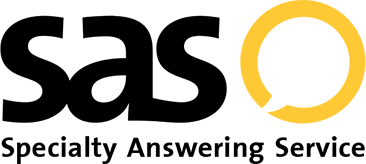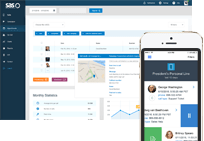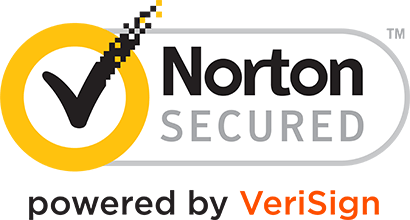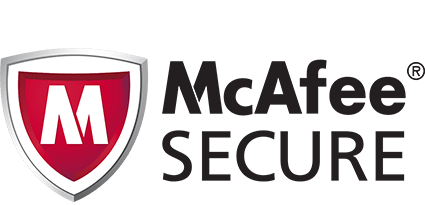- Log In
- Support
- Company
- Contact Us
- Live answers @ 1-888-532-4794
Top 15 Ways to Lower Your Answering Service Bill
Regardless of what type of small business you’re running, if you’re an industry titan or a bootstrapped startup, you’re always looking for ways to reduce your expenses. If you’re using a live answering service to handle your calls, you’re already saving money by eliminating overtime and unnecessary payroll expenses. And fortunately, there are many ways small businesses (and large ones) can reduce their monthly answering service invoice and optimize savings.
Depending on your call volume, tweaking your script and protocols can lower your bill by as much as 25%. Keep reading for some simple ways you can lower your answering service invoice:
Scripting
Answering service scripts, or the formatted conversation the virtual receptionists have with your callers, are one of the biggest culprits behind high answering service invoices – and the best place to look for cost-cutting opportunities.
- Remove unnecessary questions: Having your answering service gather information from your callers by asking loads of qualifying questions may seem helpful, but in the end it will only eat up time – and money. A better option is to have your answering service gather the basics, and have your in-house team follow up with the nitty-gritty.
- Eliminate paths that aren’t used to simplify decision making: When using an answering service, it’s important to remember that the operators handling your calls are not experts in your business. So, to avoid errors and lengthy calls, you’ll want to eliminate script paths that may clog up the workflow. For example, if your script has paths for Quote calls, Sales calls and Service calls, your agents may have trouble deciphering when to take each path. If you don’t want to eliminate any paths, then we recommend adding a driving question up front that will help steer the call and guide the operator to the correct path, like “Thank you for calling ABC Medical, is this an emergency?”
- Consolidate paths where available: Within any business, there could be a hundred different reasons why a customer may be calling, but that doesn’t mean you should include every possible scenario in your answering service script. A better approach is to include the call scenarios that come up most frequently, like calling to schedule an appointment or calling for service, and then have a general path the operators can take for everything else. If you want your operators to take messages or transfer calls for specific people or departments, you should consolidate those two options into one path which would include a list of names and departments. The more succinct and straightforward your script is, the less time the operators will spend on the phone and the lower your invoices will be.
- Adjust lengthy FAQs into their simplest form: While it is helpful to arm your answering service operators with frequently asked questions about your business, you don’t want to stuff in every possible answer to every possible question, and you also don’t want to write paragraphs of information. Not only will the operators have trouble navigating lengthy and complex FAQ sections, but the more information you add, the more time it will take them to read through and find whatever they’re looking for, which will definitely result in higher invoices. We always recommend to keep your FAQs short and sweet. After all, you are the best person to handle the more in-depth questions your customers may have.
Protocols
Unnecessary protocols are the second largest expense behind most high invoices. To guarantee a cheap answering service, adjusting how you’re contacted for messages can make a sizable dent in your overall answering service bill.
- Replace warm transfers with cold transfers: With many answering services that charge by the minute, warm transferring calls to you or your in-house staff does come with a price. While you’ll most likely not be charged the same rate once the call is transferred, as long as that line is being used, you’re being charged a patch or transfer fee. If you need your service to transfer calls, a better approach would be to have them cold transfer instead of warm transfer. If no one is available, your callers can simply leave a message for a return call which will help keep your invoices lower.
- Reduce the number of outreach attempts associated with an on-call schedule: If you’re having your answering service reach out to your on-call staff, a good way to keep your invoices low is to limit the amount of times your operators are reaching out. If each reach out attempt takes 1-2 minutes and your operators are reaching out until someone answers, and all of your employees are dodging work, you’re going to have a hefty bill on your hands. We suggest capping your reach attempts at 3 and leaving a message so your staff has the information they need to call the customer back.
- If on a per-call billing model, evaluate how and when messages are sent: Not all answering services charge by the minute, and a per-call answering service structure may wind up being more cost effective for you. Typically on a per-call billing model, each inbound call counts as a call, as well as any action the operator takes (like emails, text messages, transfers, etc.). Because of this, any message you receive may wind up costing you. However, if you’re working with a tight budget, there are some ways to help keep invoices low, like controlling how and when messages are sent. For example, you can work with your answering service so that any urgent message comes through right away, and all other non-urgent messages can be sent together as a report at the end of the day, or the beginning of the next day. That way you can consolidate your messages, and lower your invoices.
Technology
If you’re looking for a low cost answering service, leveraging technology can help with that. Using the technology available to you can reduce your live operator talk time and lower your bill by as much as 12%.
- Use IVR to route calls: While virtual receptionists are great at transferring calls, a small business working with a limited budget needs to cut out any unnecessary expenses whenever possible. Instead of having your answering service transfer calls for you, implement an auto-attendant that can route calls instead. Callers will be able to select whichever option suits them best, and be immediately directed to the person or department they’ve selected. While IVRs may come at a price, they’re way cheaper than the general cost of live operator talk time.
- Give customers a voicemail option: In a time where customers are used to getting answers immediately, voicemail isn’t always a preferred method of communicating with a business. However, if given the choice, many consumers are fine with leaving a message to have their call returned at a later time. Not every question or inquiry needs an immediate response, and the more customers willing to leave a voicemail means less money you have to dish out for your answering service invoice.
- Update your script or on-call on your own to eliminate programming fees: Updating your answering service protocols can sometimes incur programming fees. To avoid these extra fees, it’s a good idea to become familiar with making updates on your own, if your answering service offers it. Additionally, making updates on your own means you are in total control and don’t have to wait around for the programmers to complete it, which may take several days.
- If you get charged for message transmissions, use an app or web portal instead: Depending on the answering service you use or the service level you’ve signed up for, you may be charged for message transmissions. However, if your answering service offers a free mobile app or web portal, you can eliminate the cost of message transmissions by simply checking your app or portal for new messages. Mobile apps are very helpful for users who are constantly on the go, like medical professionals and utility services.
Others
Outside of auditing your scripting and protocols while adding technology layers to lower your invoice, there are a few other options.
- Eliminate sub accounts if they aren’t getting traffic: Adding sub accounts are a great way to keep multiple business lines consolidated under one roof, but they’re not always necessary. For example, some businesses may want to be accessible for Spanish speaking customers and opt to open up a Spanish sub account. However, if you’re hardly getting any traffic on the Spanish line, it probably isn’t worth the extra charges.
- If you get charged for a toll-free number, request a local: Some businesses like to use toll-free numbers to either make their company seem more official, or so out of town customers don’t get charged long distance fees. However, answering services may charge extra to use toll-free numbers, which may not be cost effective for your business. Local numbers are usually free, and if you’re forwarding your own lines to the service, then your customers will never see that number anyway!
- Adjust the times you’re sending traffic to the answering service: Generally speaking, answering services are available to answer your calls 24/7. However, that doesn’t always mean you should use them around the clock. The more phone traffic your answering service handles, the higher your invoices will be. If you’re strapped for cash, then you’ll want to limit the times in which you use your service. For example, having your in-house staff handle calls during the day and having your answering service handle calls after hours is a great way to keep your call volume and invoices low.
- Eliminate telemarketing calls: It’s no doubt that telemarketers love to call. It is their job, after all. However, it doesn’t mean you should have to pay each time they call and eat up your minutes. If you’re getting a lot of robo-calls, we suggest adding an IVR upfront which would prohibit those calls from coming through. If you have actual people calling, you can set up a path within your script the operators can follow which simply tells them you’re not interested. If they’re still persistent, see if you can have their number(s) blocked either through your phone provider or your answering service.
For more about answering service pricing plans, per minute and per call pricing, flat rate answering services, pay as you go plans, and more – please check out our Ultimate Guide to Answering Service Pricing.
Categories
- Advice (32)
- Answering Service 101 (18)
- Best Practices (10)
- Call Center Jobs (6)
- Call Center Software (20)
- Comparison (2)
- Customer Service (30)
- Funny (31)
- Holidays (19)
- Industry Hacks (19)
- Infographics (53)
- International (1)
- Medical (8)
- News (12)
- Phone Etiquette (2)
- Phones (14)
- Pricing (8)
- Quizzes (3)
- Receptionist (11)
- SAS Products (29)
- Scripting (4)
- Services (5)
- Small Business (25)
- Starting Up (7)
- Tips and Tricks (19)
- Uncategorized (1)
- Videos (19)
- Workplace (6)
Recently writen
- Call Center Script Best Practices: Advanced Script Block Tips to Optimize Your Answering Service
- January 2025 Release Notes – Adjustments to Call Details Timeline, New Scripting Updates, Live Transcription, and more!
- April 2024 Release Notes – Voicemail Greetings, Ability to Access Websites With a Username and Password, and more!
- March 2024 Release Notes – New Add-On, Settings Revamp, and more!
Follow Us
How about a demo?
We'll show you how our web portal works and answer any questions you have about SAS.
Schedule a demo







